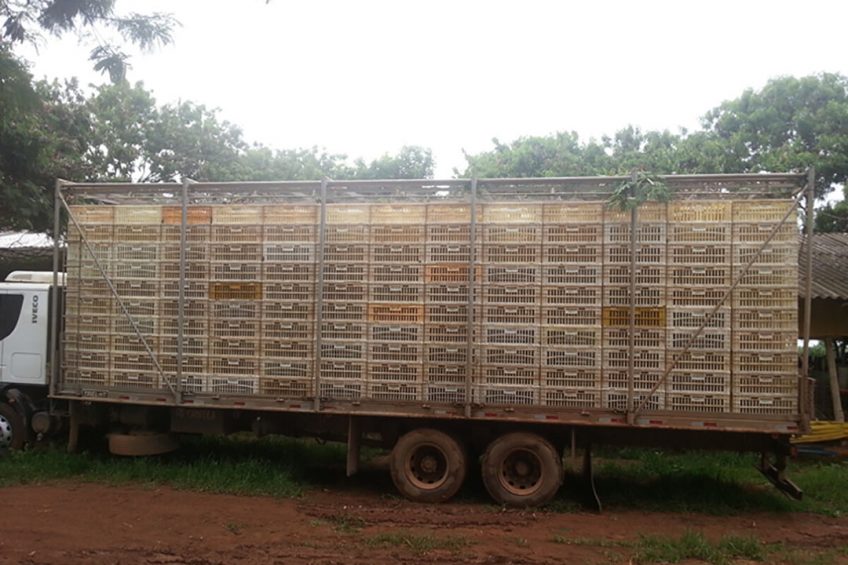Effect of transport distance and climate on broilers

Researchers looked in to the effect of transport distance on commercial broiler chickens at distances of 15 km to 90 km.
Research conducted in Brazil evaluated the temperature, relative humidity and ECI-enthalpy comfort index of commercial loads of broiler chickens at distances of 15 km and 90 km in the summer and winter (rainy and dry) seasons and their effects on body weight difference, mortality and bruising prevalence.
Transport stressors on broilers
Long-term water and feed deprivation have been correlated with yield losses at slaughter, and factors related to the vehicle, such as vibration, impact and road noise, also represent considerable sources of stress with consequent losses of yield parameters. In addition, variations in climatic conditions during transport, such as changes in temperature, relative humidity and air flow inside the cargo bay, are important stressors for broilers.
 Distress calls and performance of chicks analysed
Distress calls and performance of chicks analysed
Researchers believe that distress call monitoring may be a real-time marker of both emotional state and environmental stressors on poultry farms.
Impact on broiler performance
The consequences of microclimatic factors are almost always described as a function of broiler performance at slaughter, such as carcass yield (quantity of meat) and carcass quality (such as the presence of bruises). These analyses also considered and evaluated the degree of compromise of the thermal comfort of broiler chickens during transportation. This, said the researchers, could be used as a criterion for choosing and improving common practices during pre-slaughter handling, such as the critical time for catching and loading, determination of the density of broilers per crate, and wetting of the cargo.
 Native birds as a valuable genetic resource
Native birds as a valuable genetic resource
Italian researchers compared the quality of eggs from indigenous chicken breeds and commercial layers and saw positive potential in the gene pool of native birds.
Microclimate evaluated over different distances
The objective of this study was therefore to evaluate the microclimate of commercial shipments of broiler chickens transported over different distances during the rainy and dry seasons and the effect of microclimate on slaughter weight, body weight loss, mortality rate and occurrence of bruises on broiler carcasses considering the crate position.
Rainy season most critical
In terms of comfort, the rainy season was the most critical period for broiler transport, resulting in the highest ECI. For example, in the rainy season and at a distance of 90km, the highest ECI was ranked in the lethal zone. Broiler chickens presented a higher body weight difference when transported over longer distances but crate positions with higher ECI in the load did not reflect significant body weight loss and mortality.
Impact on broiler welfare
Thus, load microclimate can compromise broiler chicken welfare without necessarily impair broiler productivity. The prevalence of bruising on carcasses was not affected by the interaction between season and distance. Possibly, this prevalence can be associated with the management of the broilers during the breeding period. Broiler chicken performance, during transport, can also be related to road conditions, being hard to evaluate the actual impact of seasons and distances on animal welfare.
This study was published in PLOS ONE.













